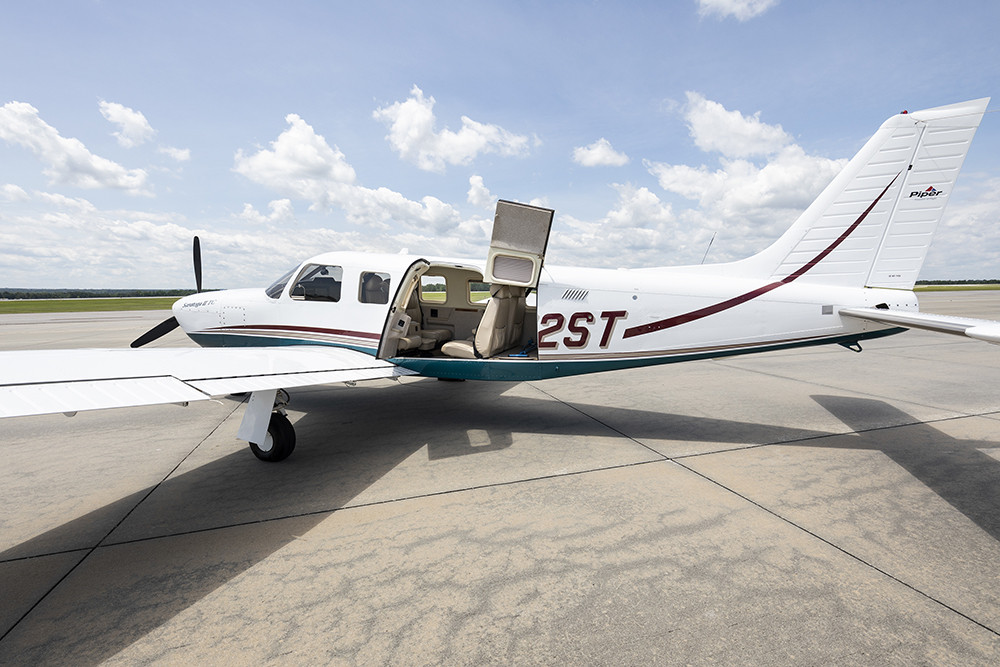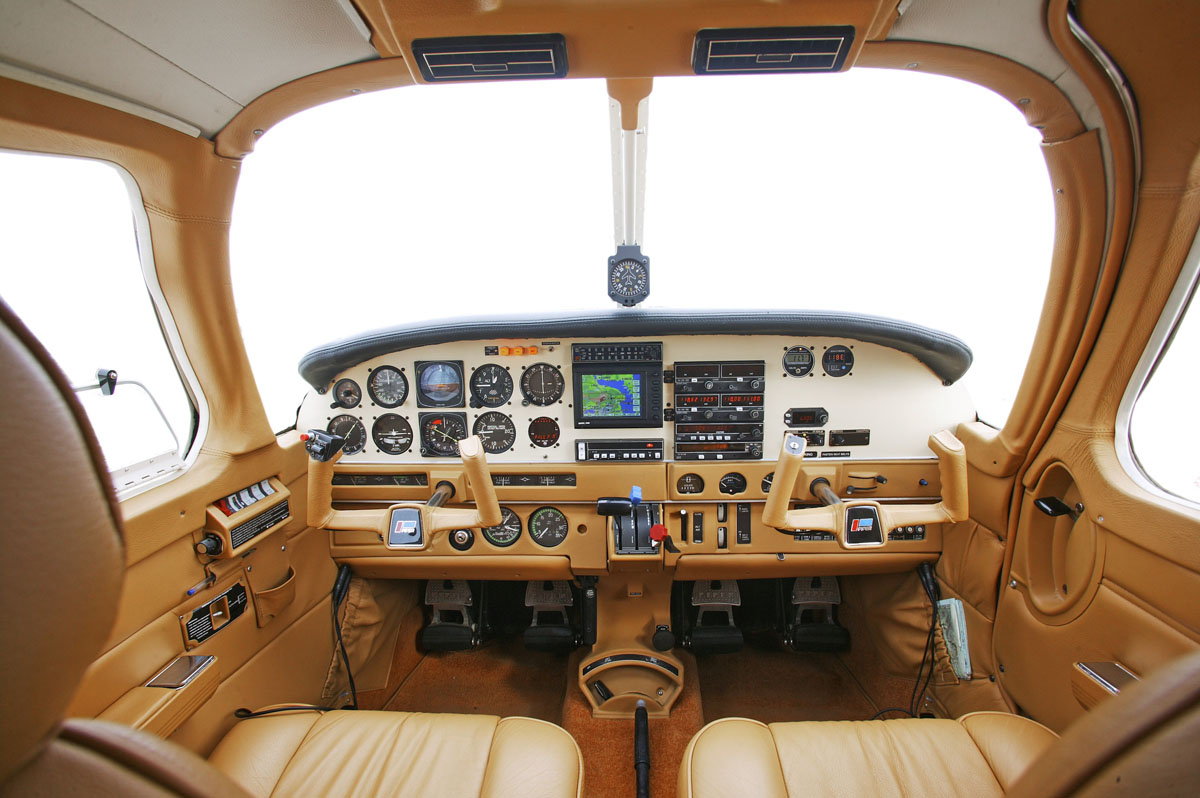Table Of Content

The IO-550’s fuel burn at this power setting is 18 gallons per hour or 108 lbs per hour. Running this for an average of 3 minutes till you get up to about 1,000 feet AGL, or pattern altitude burns 0.9 gallons. There are two kinds of Saratogas you will find on the pre-owned market. Earlier models are the retractable gear version, whilst later models are the fixed gear version. This came about mostly because landing gear problems plagued its predecessors, as it has done with all variants of the Saratoga.
Featured Plane
Some have denigrated it, some have respected it and some actually loved it for what it is. Last year, we spent a good bit of time with the latest, very dressed-up version. We all had a good time together; even though airplanes are inanimate things, we felt as if the airplane were enjoying it, too, almost aware that it was being flown by friends who respected its qualities. Maintenance personnel experienced on the Saratoga suggest regular inspections for trunnions exhibiting excessive play from bearings and bushings being outside tolerance. The Piper Saratoga’s Continental IO-550 is easy to remember when it comes to fuel burn. Once you pass 11,0000 feet MSL, on a standard day, you won’t be able to generate more than 55% of max power which is 165 hp.
Piper Lance / Where to Find Replacement Parts
Because the Piper Lance was produced between 1975 and 2009, there are no new models that can be purchased directly from Piper. There are, however, quite a few options in the used department that vary in pricing. The Piper PA-32R, or more well known as the Piper Lance, came to life when the Comanche assembly line suffered from a flood.
PA-32R Performance & Handling
If high speed at high altitude is the most glamorous attraction of turbocharging, the ability to operate safely in situations where normally aspirated airplanes would be grounded is the primary operational benefit. Take, for instance, the aforementioned Piper Saratoga II TC, a defender of the type for more than three decades. Of the group above, only the Stationair has embraced turbocharging longer.
Piper Saratoga - Price, Speed, Fuel Burn & Specs
Resale on the Saratoga couldn’t be better, with high demand for the Pa-32 series. As in all things, aircraft purchase is a tradeoff, but if you’re looking for utility, comfort, and capability, the Saratoga needs to be near the top of your list. If you are new to the Piper Saratoga, you should also practice power on stalls, and when you do, be extremely mindful of your right rudder. When those three hundred horses come online in a power-on stall maneuver, there is going to be a powerful left-turning tendency that the Saratoga will demonstrate. To get a feel for the Piper Saratoga, think of it as an underpowered twin.
NexAir Updates Piper's Saratoga - AVweb
NexAir Updates Piper's Saratoga.
Posted: Tue, 21 Jul 2009 07:00:00 GMT [source]
We'll explore the ins and outs of the sky and how to travel through it. You can retard the RPM to a lower RPM once you achieve level flight, this will further reduce fuel burn. The Piper Saratoga carries 107 gallons of fuel with 5 of those gallons being unusable, leaving you with 102 gallons of usable fuel in the fuel tank.
Each area is approved for 100 pounds, so total baggage capacity is 200 pounds. Saratogas of all description have been winning friends and influencing pilots for three decades, and even now that they’re out of production, they continue to be among the most popular of the six-seat heavy lifters. Ever since Cessna elected to shelve the 210 and all other piston products, the market has been limited to only one new six-seat retractable, the Beech G36 Bonanza. Cessna is back in the piston business with three revived fixed-gear models, but sadly for those among us who loved the old 210, the more labor-intensive Centurion is gone forever.
Aircraft Performance Data
When chugging around a circuit, dropping a notch of flap helps with visibility if seeing the runway is important to you. When landing, use the trim through the approach, maintain some power into the flare, then reduce power slowly to let it settle. With two propeller choices, the three-bladed prop will result in lower fuel burn. While there is enough power in the single-engine propelling the Saratoga, there is also not much room to be sloppy with speeds. This depends on where you are in the country and the kinds of prices your mechanic and the IA who signs off, are going to charge you.
Since 1965, Piper's basic PA-32 airframe has served as one of the most popular heavy-haulers in general aviation's piston-single fleet. With a good blend of useful load, cabin comfort, speed, and the access afforded by those huge aft double-doors, these airplanes have hit the spot with more than 6,700 customers. The latest incarnation of this airplane — The New Piper Aircraft Inc.'s Saratoga II TC — keeps this tradition alive. Since I’d previously taken a Lance to Africa at roughly the same weight, I wasn’t surprised that the HP did a good job of handling the extra weight. Despite the overload, climb was a fairly strong 800 fpm, and the airplane manifested the same stable attitude I’ve come to enjoy from other PA-32s. If I’d needed to fly at 10,000 feet initially, the airplane would have obliged, but the wind is almost never favorable for that altitude off the West Coast.
In such cases, it points its enormous nose towards the sky even on the ground. It looks as though it is out of the loading envelope even when it is not. All performance figures are based on standard day, standard atmosphere, sea level, gross weight conditions unless otherwise noted. Control authority in all axes is slow and steady, although not heavy. In 1980, Piper reverted to a conventional tailplane on both models and a semi-tapered wing to replace the barn-door slab wing that had graced the Cherokee Six.

To get the best out of this setting, at the highest altitude you can get to, set the manifold pressure to 17 inches and the RPM to 2600 in the climb. As you climb the manifold pressure will decrease since it is partially influenced by the external pressure that is decreasing at about an inch every 1000 feet. Higher RPM at a climb (for a constant speed prop) will result in the lowest fuel burn per foot of climb. When you transition the Saratoga to the climb phase, set the power for 75%.
While the Saratoga TC may lag a few knots behind the B36TC, speed isn't everything. Many pilots have found the Saratoga line to be among the most stable, forgiving, and docile big singles on the market. Its stall characteristics are benign, the airplane has great lateral stability, and it rides turbulence in an admirable fashion. This all adds up to a wonderfully stable platform for instrument flying. It's as close to a hands-off, ride-on-the-rails airplane as you can find. The genesis of the Piper Saratoga resulted from a hurricane in 1972, whose flooding wiped out much of the Piper plant at Lock Haven, Pennsylvania.
The usual suspects provide the usual modifications for Saratogas, including wingtips with landing lights (standard on the latest airplanes), gap seals and fairings, modified cowls, and speed brakes. While Saratogas are good load-haulers and offer long range, they’re not cheap. According to Vref, an original 1980 fixed gear PA32R in average condition is now worth a bit over $140,000. The fact is that Saratogas — even Saratoga II TCs — are, relative to some other comparable makes, extremely well-mannered. Yes, they do fall within the definition of a complex, high-performance airplane. As such, they demand that their pilots be well-trained and proficient; you could say that of all airplanes.
These engines are common, and many mechanics have experience maintaining them, and parts aren’t difficult to come by. The Piper Cherokee Six was given retractable landing gear and other modifications, which in turn created the Piper Cherokee Lance. Continuous modifications and adjustments were made in order to design the best form of the Lance possible. John D. Ruley is an instrument-rated private pilot, and a freelance writer specializing in aviation and technology. Today, Piper offers an all-glass Avidyne FlightMax Entegra panel as an option in new Saratogas.
Non-turbo models from 1980 range in total airframe hours from as low as 1,700 to 4,700. The price range across these options stretches from US$169,000 to US$195,000, although most have 400 hours or less to run on the engine manufacturers TBO. The later HP models have airframe hours between 2,500 to 4,000, with prices spanning US$280,000 to US$330,000. The inboard tank is attached to the wing structure with screws and nut plates. The outboard tank consists of a bladder fuel cell that is interconnected with the inboard tank. An electric fuel pump is provided for use in case of failure of the engine driven fuel pump.

No comments:
Post a Comment